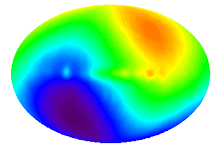Common Mechanisms of Bacterial
Cell Death Induced by Antibiotics
Antibiotics bind to their
targets, disrupting normal cellular metabolism, including the tricarboxylic
acid (TCA) cycle. This depletes intracellular NADH, which is paired with a
commensurate rise in the production of reactive oxygen species such as peroxide
and superoxide. These reactive oxygen species interact with Fe2+ via Fenton chemistry to
generate highly toxic oxygen radicals, which react with DNA and proteins,
resulting in death of bacteria.
The new work by
Kohanski et al. provides a theory of bacterial cell death induced by
antibiotics wherein the inhibition of an essential process—for example,
cell-wall synthesis—results in an increase in the concentration of
intracellular hydroxyl radicals and damage to vital cell components (DNA,
proteins, membranes). Furthermore, this work nicely builds on research showing
that antibiotics such as ciprofloxacin also induce the SOS response and that
the SOS response is a key step in the development of antibiotic resistance.
The SOS response
includes the production of proteins involved in the repair of DNA damage such
as RecA and protein folding agents such as chaperones. The repair of DNA damage
is frequently accompanied by tolerance of minor gene mutations that can
contribute to antibiotic resistance. Cell death and antibiotic resistance may
therefore be connected through the production of hydroxyl radicals.

沒有留言:
張貼留言